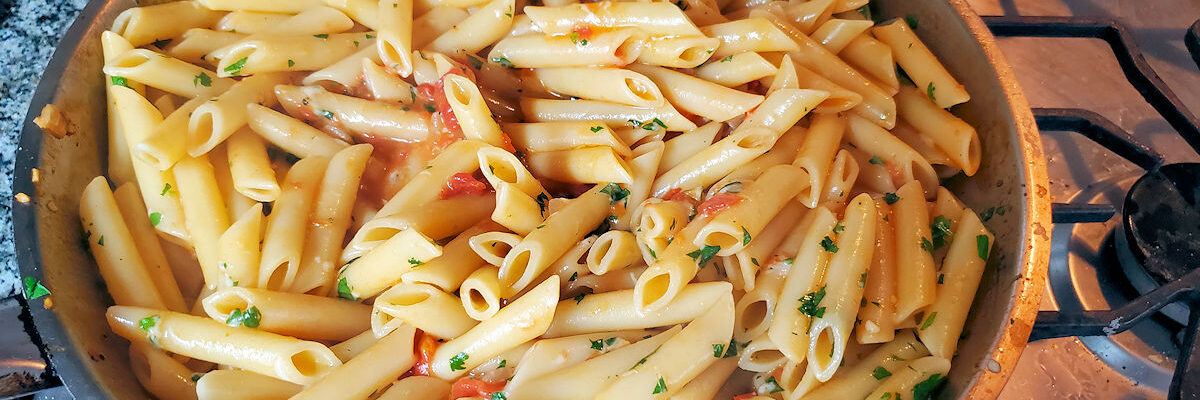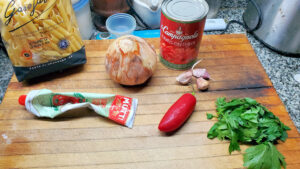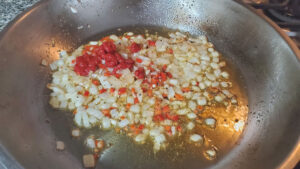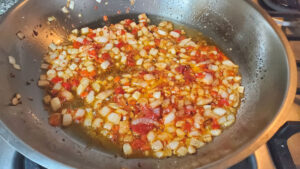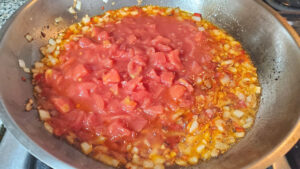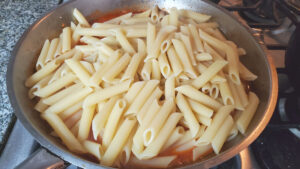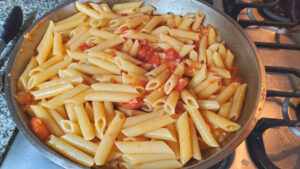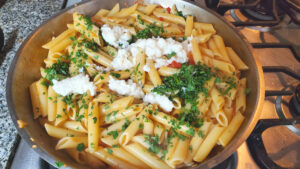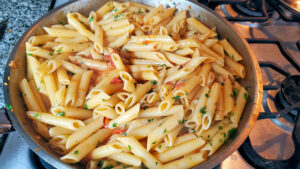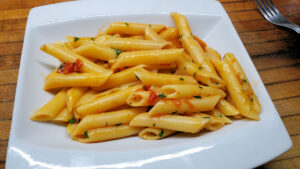I was talking to a friend about this series of pasta posts, and he noted that I’ve mostly focused on the area around Rome and Naples, wondering just how many pastas there are from those regions. And of course, if we’re talking about well-known pastas, internationally in particular, it’s a limited field, and there are plenty of other regions to move on to. It just happens that Rome is one of my favorite cities in the world, and the city in Italy in which I’ve spent the most time.
But in answer to his question, I really have no idea – there are around twenty pasta shapes that are common in Lazio, the region around Rome, and so I haven’t even scratched the surface of that. It isn’t my intention to be comprehensive, and my focus is really more on the pastas that those of us outside of Italy know and love. So there will still be more from these two regions, but plenty more from other parts of the country. You can check out my index as it expands….
And, that brings us to today’s pasta, and yes, once again from Rome. Penne all’arrabiata, a pretty well-known one, and quite simple. It’s also, like gricia was to cacio e pepe, amatriciana, and carbonara, sort of a mother pasta to variations like all’infuriata, alla vodka, and alla moscovita. All of these are far more modern pasta dishes than the gricia canon, with arrabiata, while based on a local spicy dish that had been around for awhile, didn’t really come into being as a named pasta until the 1920s (chef Antonio Cecchini, at restaurant Le Arrabbiate, in Rome), and the others showed up in the 1970s and 1980s.
Here we have penne pasta, an onion, garlic, crushed tomatoes, tomato paste, a spicy chili (not the type most commonly used in Lazio, but it’s what I had), and some parsley. Not pictured, the usual salt, pepper, olive oil, and, I forgot to put my wedge of pecorino romano on the cutting board for the photo. Many prefer dried pepperoncino to fresh chili, and both work. Parmigiano is often used in place of the pecorino as well, but is less traditional. Some folk, who like a saucier dish, use tomato passata instead of crushed or chopped tomatoes, but that’s also not as traditional.
Chop the onion, garlic, and chili (seeded or not, depending on how spicy you want it) and saute in some olive oil with a little salt and pepper.
When soft, add some tomato paste and cook down for about five minutes.
Add the crushed tomatoes and continue to cook over low heat. This is the point I’d drop the penne into the boiling salted water. If the sauce starts to look a little dry, add some of the pasta water.
When the penne is about two minutes short of being finished, add it to the sauce, along with a couple of ladles of pasta water, and finish cooking the pasta in that, stirring and tossing to both coat and emulsify the sauce.
It should end up more or less like this. I might have added a little more pasta than appropriate for the sauce, but you don’t want a huge amount, it’s mostly aborbing the flavor into the penne rather than being a saucy dish.
Add the pecorino “cream” as we’ve talked about, along with the chopped parsley.
Stir and toss to coat well, taste, add salt and black pepper if needed.
And, serve!
I’m thinking, that because they’re so similar, I might do a single post with all three of the above-mentioned derivation pastas in one, since mostly they just require a simple addition of one or another ingredient. And, obviously, the most well-known of them is the penne alla vodka, so that will serve as the base point.
